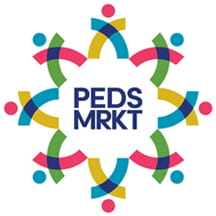Beth Silber admits that even she overlooked it at first.
As she conducted interviews with dozens of parents to gauge what they felt was most important to a patient and family experience, she was surprised to see one notable omission—patient safety.
“When we look at the information we learned, that is the most surprising thing,” says Silber, M.P.A., family consultant, Sala Institute for Child and Family Centered Care, Hassenfeld Children’s Hospital at NYU Langone in New York City. “As a parent, you just automatically think if you’re in a children’s hospital, it’s supposed to be safe.”
Dozens of interviews contribute to larger initiative
The survey was part of a larger initiative at Sala Institute for Child and Family Centered Care to understand and improve the patient and family experience at Hassenfeld Children’s Hospital. The goal is to achieve the optimal patient and family experience through the design and implementation of integrated initiatives that improve partnership, resiliency, wellbeing and safety for patients, families and staff. This can potentially serve as a broader and more balanced approach to traditional siloed work streams.
To gather the data, Silber and her team held an open forum with the Sala Family Advisory Council at Hassenfeld Children’s Hospital, consisting of about 25 parents and some patients with experience across more than 30 pediatric medical disciplines.
From there, she conducted several in-depth one-on-one interviews with select parents. Additionally, Silber interviewed seven family advisors from different hospitals around the country to gain additional perspectives on what drives the patient and family experience.
The 7 most important aspects to a quality experience
The fruits of Silber’s labors identified seven core components critical to a high-quality patient and family experience:
- Positive medical outcome. This doesn’t necessarily mean the child was cured, but rather parents trusted that the medical team had a plan, communicated and coordinated well with one another, executed on the plan and achieved the best possible outcome.
- Relationship with clinicians. This speaks to the families’ level of engagement with the members of their medical team. They feel a personal connection with their clinicians and the medical team is viewing their child holistically. Parents want their own knowledge of their child respected and heard, including questions and concerns. “People value their relationships—and their children’s relationships—with the clinicians very strongly,” Silber says. “It is something that roots families to the institution and keeps them there.”
- Efficiency. It’s important for families to feel their time is respected. A well-run office makes appointment scheduling and follow-up communications easy. And for patients who require care across multiple specialties, care coordination is key to an optimal quality experience.
- Environment. “This was an easy one,” Silber says. “Is it clean and calm? Is it a patient and family-centered mindset? Is it respectful of your privacy? Are the people kind and attentive?”
- Transparency. There are no surprises, so patients and their families know what to expect—including with billing. For children with more complex medical needs, parents appreciate clinicians who are confident and respect the family’s need to make an informed decision.
- Safety. Though it was initially left off the list by way of assumption, there’s no denying its importance. “I don’t think we can ever confuse assuming it exists with not thinking it’s important,” says Fiona Levy, M.D., MBA, executive director, Sala Institute for Child and Family Centered Care, Hassenfeld Children's Hospital.
- Consistency. Parents expect the same level of experience across an institution—from the quality of care to how information is provided. Inconsistency from one department to another can lead families to cherry-pick departments and avoid others altogether.
Ongoing partnership drives design work
The findings gleaned from Silber and the team’s discussions with families are just the beginning. The Sala Institute is using the information as a foundation for working with physicians and families designing an improved model of family-centered care. And while the parents’ input was integral to providing that insight, their voice is still needed as the design work moves forward.
“Beth and other families are active co-designers working alongside clinicians at Hassenfeld Children’s Hospital as we all think through this together,” Levy says. “We very much believe in the partnership model. You need to have families at the table influencing shared decision-making—not only in the moment of their child’s care but also in the broader design of care.”



